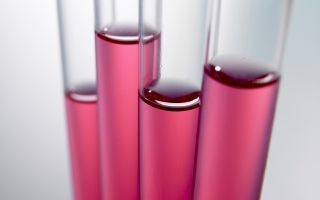In clinical practice, indirect methods for determining the absorption function of the small intestine are mainly used. They allow one to judge absorption by the speed and amount of appearance in the blood, saliva, urine and feces of various substances taken orally or administered through a tube.
Content
Load tests
In these studies, the amount of test substance previously taken orally is determined in the blood or urine.
Test with glucose, galactose or fructose
In the morning, on an empty stomach, the blood is tested for glucose and then 50 g of glucose in 400 ml of water is taken orally. An indicator of absorption function is the increase in blood glucose 15 minutes after exercise. If the absorption of the corresponding sugar is impaired, the increase in blood glucose is less than 1 mmol/l.
Test with lactose, sucrose, maltose
The study is carried out using the same methodology as the previous one. A low increase in blood glucose indicates a violation of membrane hydrolysis of the disaccharide. In this case, a glucose test should also be performed. A sufficiently high increase in glucose in the blood confirms the conclusion about a violation of membrane digestion, and a low increase indicates a violation of absorption.
Vitamin B12 test
On an empty stomach, 0.25 mg of carbacholine is administered intramuscularly to stimulate the secretion of intrinsic factor Castle. After 15 minutes, 2 mcg of isotope-labeled vitamin B12 is given orally in 20 ml of water. Normally, at least 20% of the administered dose is excreted in feces within 24 hours. A decrease in this indicator indicates a deficiency of vitamin B12 in the body.
Potassium iodide test
Give 0.25 g of potassium iodide orally in 250 ml of water and determine the time of appearance of iodine in saliva. Saliva is collected every 2 minutes into test tubes containing a 10% starch solution. Normally, iodine appears in saliva no later than 12 minutes. In the presence of iodine, the starch solution turns blue.
Vitamin A test
The content of vitamin A in the blood is examined before and within 6 hours (with an interval of 1 hour) after a load of 500,000 IU with an oil solution of this substance. A flat curve indicates poor absorption of vitamin A.
Iron test
Give orally 5 mg of an iron isotope with an activity of 5 μCi, 0.1 g of ascorbic acid, dissolved in 100 ml of water. The stool is collected and its radioactivity is determined. Normally, no more than 80% of radioactive iron is released, the rest is absorbed.
Perfusion method
This method is direct and allows you to identify disturbances in the digestion of food and the absorption of beneficial elements.
The study is based on the use of a special probe and equipment. A probe is inserted into the jejunum, and a medical solution is poured into the intestinal lumen through it. The composition of the injected liquid includes those elements whose absorption by the body must be checked. After a certain time after injection, liquid is taken from the intestines with the same probe.
The resulting liquid is analyzed for its composition and the quality of intestinal function is determined using special calculations.
Is it worth swallowing a tube for this?
The procedure of swallowing a probe is not pleasant. But in modern clinics with good equipment, it no longer causes pain. This diagnosis allows you to study in detail the qualitative and quantitative characteristics of food digestion and the efficiency of absorption of nutrients in the small intestine.
These data open up the possibility of identifying detailed reasons for the appearance of certain symptoms in patients with intestinal diseases. And this, in turn, allows the doctor to prescribe high-quality, accurate treatment.
Ballast samples
These methods are based on determining the difference between the amount of a substance ingested and excreted in the feces.
Van De Camera Method
It is based on the biochemical determination of neutral fat and fatty acids in the daily amount of feces.
Feces are collected within 72 hours. Store refrigerated during collection. Avoid contamination with urine. 2 days before and during stool collection, you need to take 50-150 grams of fat per day with food.
Normally, the amount of total fat and fatty acids should be 60-80% of fecal lipids, and the amount of total fat should not exceed 5-6 g/day.
Steatorrhea is observed in patients with impaired fat digestion.
Radionuclide methods
The study is based on the use of labeled fat and the study of radioactivity in stool and blood. If fat absorption is impaired, the radioactivity of the stool increases, and the radioactivity of the blood decreases compared to normal levels.







